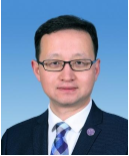
Prof. Benfeng Bai
Tsinghua University, China
Title: Frontiers in near-field optics: from ultraprecision manufacturing to multi-physics measurement
Abstract:
Near-field
optics is a frontier field in nanophotonics and plasmonics, which focuses on
the study of light-matter interaction in the close vicinity (usually within one
wavelength above the surfaces) of nanostructures or materials, where the
electromagnetic field components carrying high spatial frequency information
exist in evanescent form and may interact strongly with nano-objects. In this
talk, we review and demonstrate our recent research advances in developing
novel near-field optical techniques to achieve ultraprecision nanofabrication
and nanomeasurement. Specifically, a method called optical far-field-induced
near-field breakdown (O-FIB) approach is developed, which allows direct
nanowriting in air. The writing is initiated from nanoholes created by
femtosecond-laser-induced multiphoton absorption, and its cutting “knife edge”
is sharpened by the far-field-regulated enhancement of the optical near field.
A spatial resolution of less than 20 nm (~λ/40) is readily achieved and the
polarization control of the incident light can steer the nanogroove writing
along the designed pattern. Then, we show some new advances in scanning near-field
optical microscopy (SNOM) to realize multi-field characterization of
nanomaterials and nanostructures. A general near-field imaging theory based on
the reciprocity of electromagnetism is established, which reveals the mechanism
of probe-field interaction and can be a tool for designing functional
nanoprobes. By employing the theory and combing ultraprecision measurement
techniques, several new near-field microscopic methods have been developed,
including a spin-selective and phase-resolved SNOM that can directly probe the photonic
spin-orbit interactions in nanoscale, a scattering-type SNOM that can probe the
nonlinear response of nanomaterials excited by confined modes, a nano-photoluminescence
microscopic method that can sensitively and accurately discriminate various
nanodefects in low-dimensional materials through exciton emission imaging, and a
brand-new method called light enhanced van der Waals force microscope (LvFM)
that can discriminate the nanoscale heterogenous composition of nanomaterials
with a very high spatial resolution far below the diffraction limit under
ambient conditions. The proposed methods and systems provide powerful tools for
the exploration of light-matter interactions in novel nanomaterials such as
low-dimensional materials.
Biography:
Professor Benfeng Bai is the principal investigator of the Nanophotonics Group in the Department of Precision Instrument in Tsinghua University with research emphases on Advanced Nano-devices, Nano-fabrication and Nano-measurement based on Near-field Optics. He has published 100+ research papers in leading journals including Nature Communications, Light: Sci. & Appl., Nano Letters, Advanced Functional Materials, etc., has given 20+ invited talks in international conferences, and has been granted 30+ patents. He is now the board member of many academic organizations such as the Sino-French Optoelectronics and Photonics International Research Network (PHOTONET) and the National Technical Committee on Standardization of Nanotechnology of China. He has been a Topical Editor for Optics Letters (2014-2020) and is now a board member of journal Micromachines.